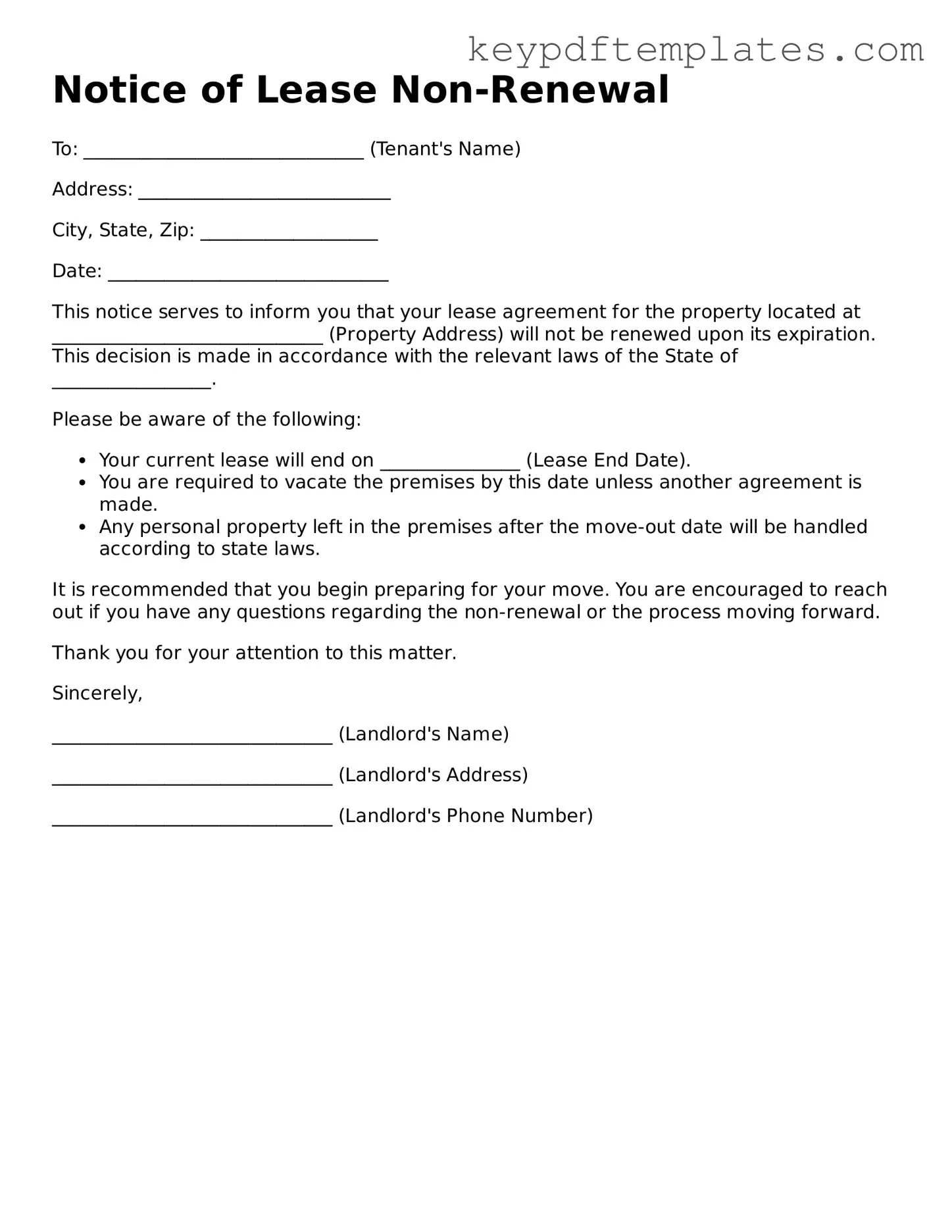Printable Notice of Lease Non-Renewal Template
The Notice of Lease Non-Renewal form serves as an official document that communicates a landlord's intention not to extend a lease agreement once it expires. This form is crucial for both landlords and tenants, as it sets clear expectations regarding the end of the tenancy. Understanding its purpose and proper usage can help prevent misunderstandings and facilitate a smooth transition for all parties involved.
Modify Document Online
